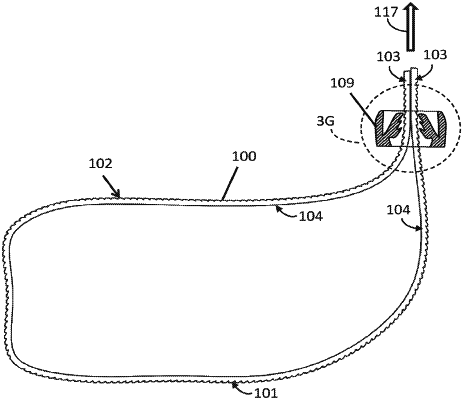| CPC A61B 17/0057 (2013.01) [A61B 17/0467 (2013.01); A61B 17/0469 (2013.01); A61B 17/0482 (2013.01); A61B 17/0487 (2013.01); A61B 34/30 (2016.02); A61B 2017/00349 (2013.01); A61B 2017/00663 (2013.01); A61B 2017/06057 (2013.01); A61B 2017/06176 (2013.01); A61B 2090/064 (2016.02)] | 25 Claims |

|
15. A method for closing a tissue defect, the method comprising:
positioning a guide beneath the skin between a first incision and a second incision in the body of a patient so that the distal end of the guide resides near the second incision;
inserting a first needle through the first incision;
inserting a second needle through the second incision and through an aperture; placing a distal end of a self-locking strap through the first needle and into the guide;
engaging the second needle with the distal end of the strap within the body cavity;
providing a laparoscopic grasper configured to engage the second needle with the distal end of the strap and engaging the second needle with the distal end of the strap with the laparoscopic grabber, wherein the laparoscopic grabber is robotically controlled;
pulling the second needle through the guide and out of the body leaving the strap captured by the aperture in the guide;
releasing the strap from the first needle;
pulling the guide out of the body through the first incision so that the guide and the distal end of the self-locking strap exit the first incision;
placing a lock-head over the distal end of the self-locking strap; and advancing the lock-head down the self-locking strap to tighten the self-locking strap around a defect, wherein the lock-head is permanently attached to the proximal end of the self-locking strap.
|